I discovered this startling fact just a few weeks ago, and despite my life being filled with coincidences this one took my by surprise. OK, OK. I haven’t told you the full story – not quite. What happened was this: I discovered that one of my ancestors was named George Frederic Handel Halstead and he was born in 1848 at Marsh, a farm high on the hill above Hebden Bridge, just a little below the village of Blackshaw Head. The week after I discovered this fact one of my blog followers informed me that Marsh farm is currently for sale – for 975,000 pounds! There were 30 photos of the property including views across to Stoodley pike and also the inside of the barn with its original framing.

George didn’t live to see his first birthday, dying when he was just 11 months old, 90 years after the composer Handel had died. But just his name had me hooked on finding more about him and his family. Was there a music connection amongst my Halstead ancestors, I wondered. I’ve traced my lineage from many branches of my family but until I found this little boy I’d never researched the Halstead branch, so off I went spending many an hour online looking through ancestry websites and old newspaper archives.
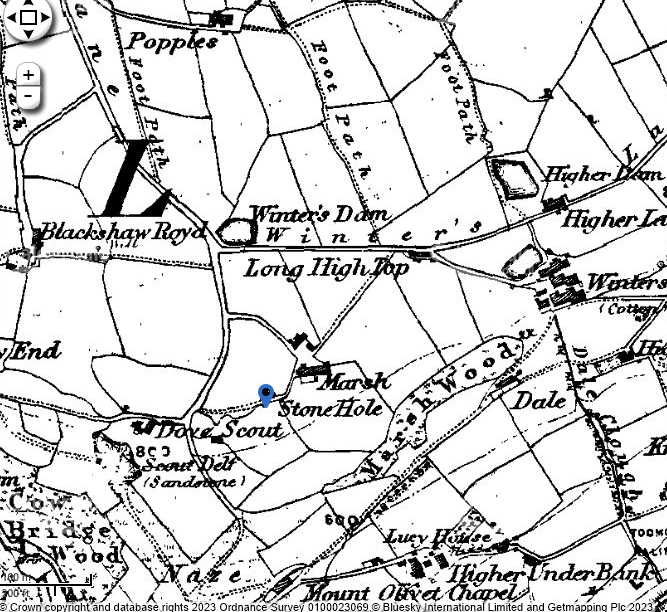
George’s father was named Handel Halstead, Handel not being a name I’d encountered before in my family’s story, despite my having documented over 7000 people in my family tree. He was born December 15, 1823 and was baptised in Heptonstall 6 months later. Interestingly on the baptismal register his name is written as Andal but there’s an * by the side and at the bottom of the page it’s corrected to Handel, so perhaps even the vicar was unacquainted with the name Handel.
Handel’s father also had a somewhat unusual name: Bannister, born 1781. I’m guessing that this was an ancestral surname being used as a forename. Bannister’s father, William, was born around 1750 and apart from knowing where he died and the fact that he was buried at Cross Stone church in Todmorden on June 25, 1799 I know next to nothing about him other than on his son Bannister’s marriage certificate he gives his occupation as a weaver. William died at Old Royd, Langfield, just off Kilnhurst Lane where Billy Holt had lived.
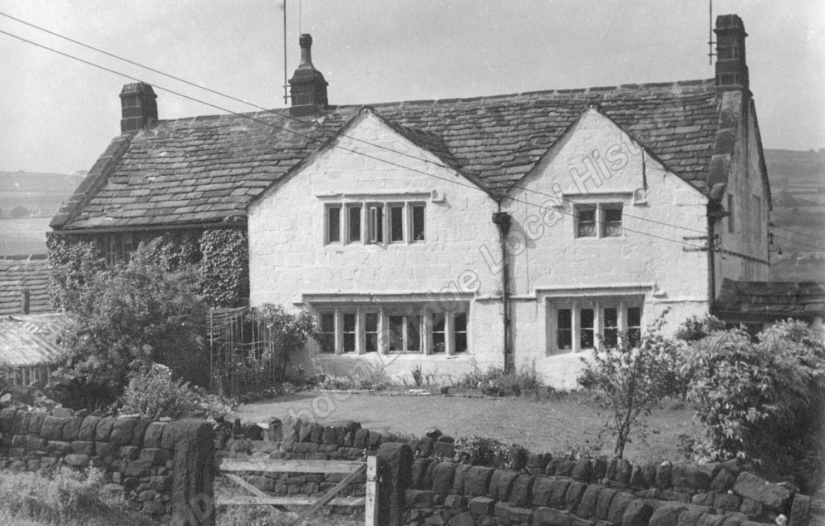
So it’s possible that Bannister had lived there too. At the age of 26 Bannister married Sarah (or Sally) Chatburn at Heptonstall church. On the record of the marital banns Bannister’s name has widow in the place where the occupation is usually given. All the other men on the page are weavers. Their marriage took place on December 27, 1807. I can easily conjure up the snow, ice, heavy rain, gale force wind that they might have experienced getting married in the old church in Heptonstall. The newly weds set up home at Rough Head on Kilnshaw Road (or Kilnhirst) and Bannister, in 1808, is recorded as a shuttle maker. In quick succession 1809-1823 – seven children were born – John, Elizabeth, Henry, James, Bannister, Amelia and finally Handel. Henry and James, 1813 and 1816 were recorded as having been born at Machpelah, the row of cottages in Hebden Bridge that my Moss ancestors also lived in later. In 1818 son Bannister was born at Weasel Hall, the hall clinging to the hillside to the south of Hebden and visible from the window above my desk where my ancestor Ezra Butterworth had also lived. In 1834 Pigot’s Directory lists Bannister as a shuttle maker at Bridge Lanes in Hebden Bridge where he lived for the rest of his life, dying in October 1853 at the considerably old age of 71. Following the death of his wife Sally Chatburn he had remarried, aged 60 – unusual for that time – Sarah Walton, the marriage taking place in Halifax minster. On their marriage register it states that Sarah is a factory woman and he is a shuttle maker. It brought to mind the true story of John Fielden of Todmorden, a prominent mill owner who fell in love with a factory girl who promised to marry him if he built her a castle, which he duly did above Todmorden, in the 1860s, and which I’ve been fortunate enough to visit and have an impromptu guided tour. Sarah outlived Bannister by 25 years. But back to the Halstead story.
On to the exploits of Bannister’s children. 3 of his sons set up a shuttle making company under the name of James, Bannister and Handel Halstead making shuttles. According to the Malcolm Bull website ‘The partnership was dissolved in February 1853 as far as regards Handel Halstead.’
Handel Halstead & Sons were manufacturers at Bridge Street Shuttle works, Hebden Bridge, John and William being his sons and business partners. The partnership was dissolved in January 1887. The business was carried on under the same name by John and William and was still at Bridge Street in 1905. John and William were the older brothers of George Frederick Handel Halstead. In 1891 John and his wife Mary Elizabeth (from Walsden) were living at 58 Market Street. His brother William was living next door at 56 Market Street. So a couple of days ago I called in at 56 Market Street. It’s a 2 minute walk from my apartment. It’s now a shop and workroom called Hat Therapy where the current milliner Chrissie King designs and makes hats and accessories.

56 & 58 Market Street today
She didn’t know of the Halstead living there more than a hundred years ago but she pointed me to an alley running at the back of the shop and to a flight of step stone steps running up to Brunswick Street. Wow! That’s the street where my two of my daughters stayed in an Airbnb when they brought my granddaughter to England for the first time last November. Chrissie pointed to a long white painted building on Brunswick Street overlooking her shop.
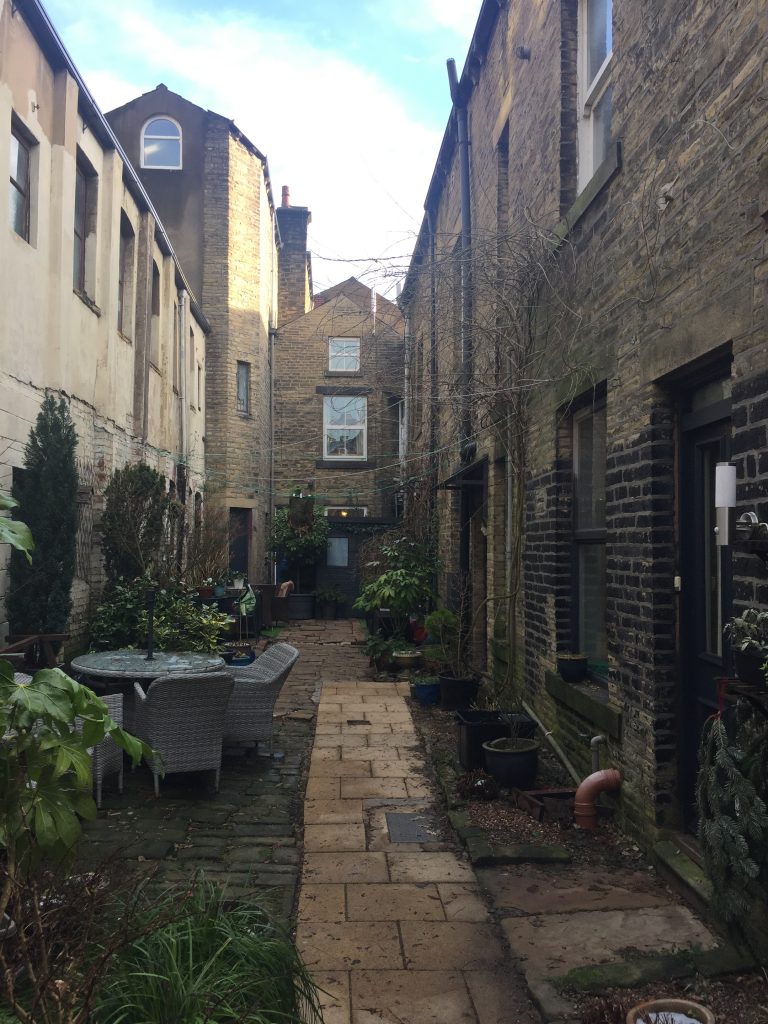
‘That was once a dance hall that burned down. It was subsequently used as an undertakers who built a separate garage for their hearse. ‘ I could hardly believe what I was hearing. The building my family stayed in was called ‘The Garage’ and we had all thought what an odd place to build a garage – and how large it was for a garage. I mean none of the terraced houses in this town have garages. How amazing! I wonder if the ‘dance hall/undertaker’s was once the workroom for the Halstead shuttle making business. I posted a photo of the building on Facebook to see if anyone knew anything about the building but nothing of interest came forth. By 1901 John Halstead had moved from Market Street and was living in a substantial Victorian house on Garnett Street with his wife and family called Uplands. Wait a minute! I’ve found references to Uplands before in my family research.
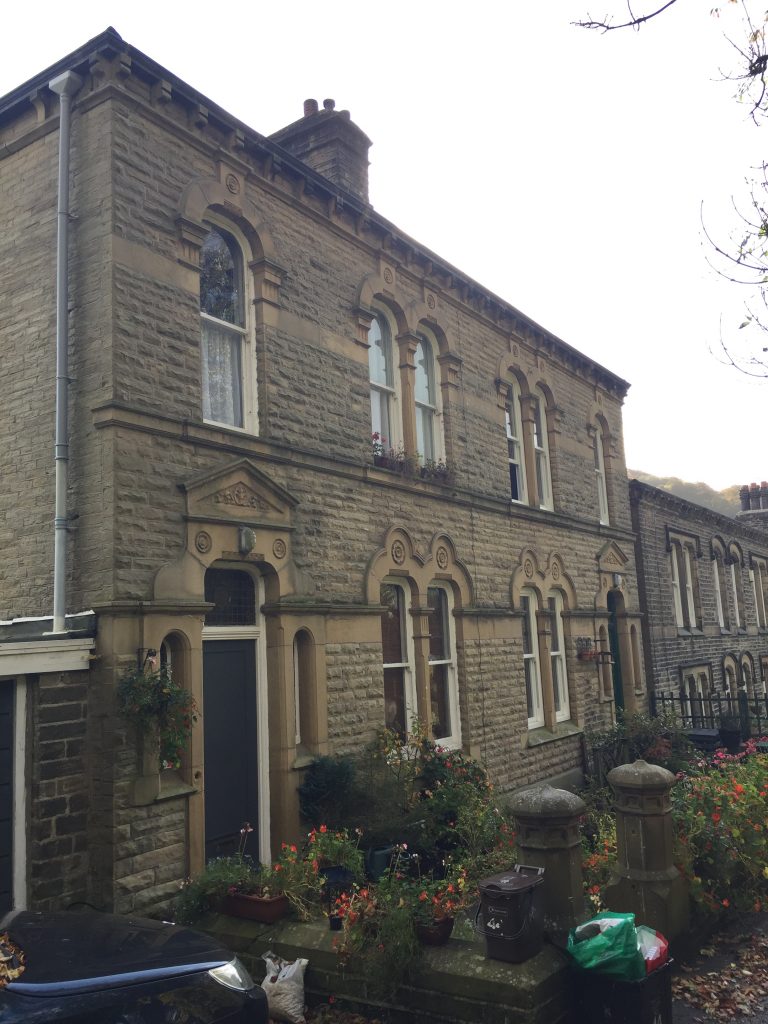
Another ancestor, Willie Wrigley, an architect had lived in the underdwelling below Uplands. I looked back in my notes and found this: ‘Willie Wrigley and his wife Charlotte had been given notice to quit after the repeated altercations with their neighbours and their landlady Mrs Halstead who lived in the over dwelling, Uplands. It wasn’t until this moment that I realized that this overdwelling is visible from my own bedroom window. The overdwelling is called, appropriately, Uplands and is a large double front house, symmetrical and divided into two dwellings. Obviously built for a Victorian business owner even today it has an imposing presence.’ So the lady who evicted Willie Wrigley was none other than the wife of John Halstead who was the brother of George Frederick Handel Halstead who had been the catalyst for my research into the Halstead branch of my family tree. Willie eventually ended up in Wakefield gaol.
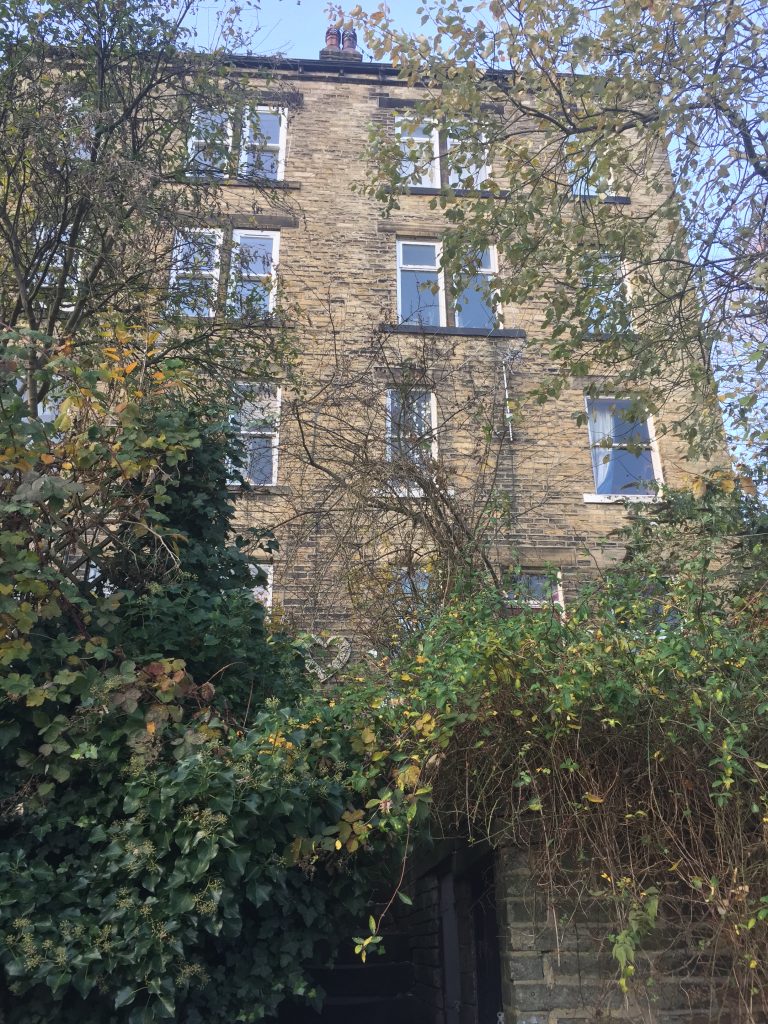
His story and especially his problems with Mrs Halstead can be found in my blog:
http://blog.hmcreativelady.com/?s=Willie+Wrigley.
But the main focus of my enquiry was the name George Frederick Handel Halstead. Surely there must have been a music connection. He was given that name by his parents so I decided to look through the newspapers to see if I could find any reference to Handel Halstead and music. And there it was! In 1898 I found a newspaper article entitle ‘Organ’s final services.’ After being there for 20 years the organ at Slack Baptist church was to be overhauled, extended and improved. A special service was held to mark the occasion when the organ would be removed and many former members of the church were invited to the service which was to be more than ordinarily musical. One ‘notable personage’ was Mr Handel Halstead who was formerly the church organist there. ‘He presided during the singing of the greater portion of the hymns and though he has passed 75 years of age and has been long out of practice he still possesses a considerable amount of executive skill.’ The pastor, Rev A.K. Archer delivered an address on organs and the references to that instrument in the bible.
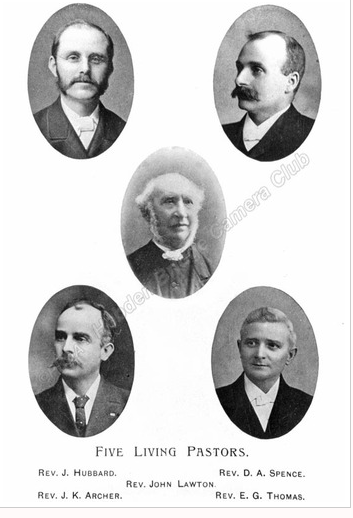
Amidst the glowing accounts of organs and how they work one damming sentence caught my eye: ‘In that vast abode of stagnation which we call China a sort of prehistoric organ is still to be found.’
Then just yesterday I received the following email from the Hebden Bridge Local History Society in reply to my query about any musical Halstead: In our archives: R HEPB1 S Centenary Souvenir Heptonstall Slack Baptist Church by E G Thomas 1907 – I have noted down that November 1857 dedication of organ at Slack. Mr Handel Halstead appointed organist. John Gibson of Greenwood Lee took over as treasurer from William Marshall in 1862 (he died in 1867 and Handel Halstead took over). 1865 Three elders above were reappointed plus David Dearden, Handel Halstead and John Sutcliffe of Slatering.’ So Handel was not just the organist but had been a treasurer of the church and also an elder.
The church is now a private house. I first visited it on August 14, 2017, before I moved to Hebden Bridge. I was staying in Hebden during the summer and on one of my days out exploring the vicinity and took the bus to Slack. The church and the Sunday school behind it appeared to be in bad state of repair but there was evidence of work in progress. I carefully opening the gate with a path leading to the church entrance.
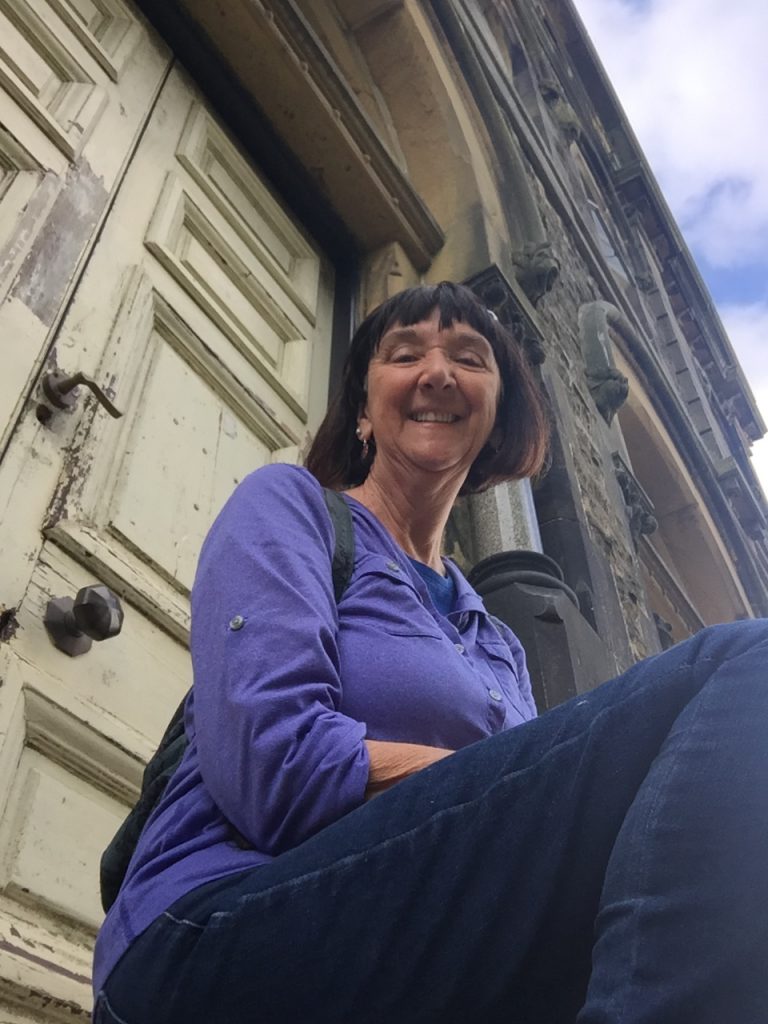
Visiting in 2017 when I had no idea of a family connection with the building 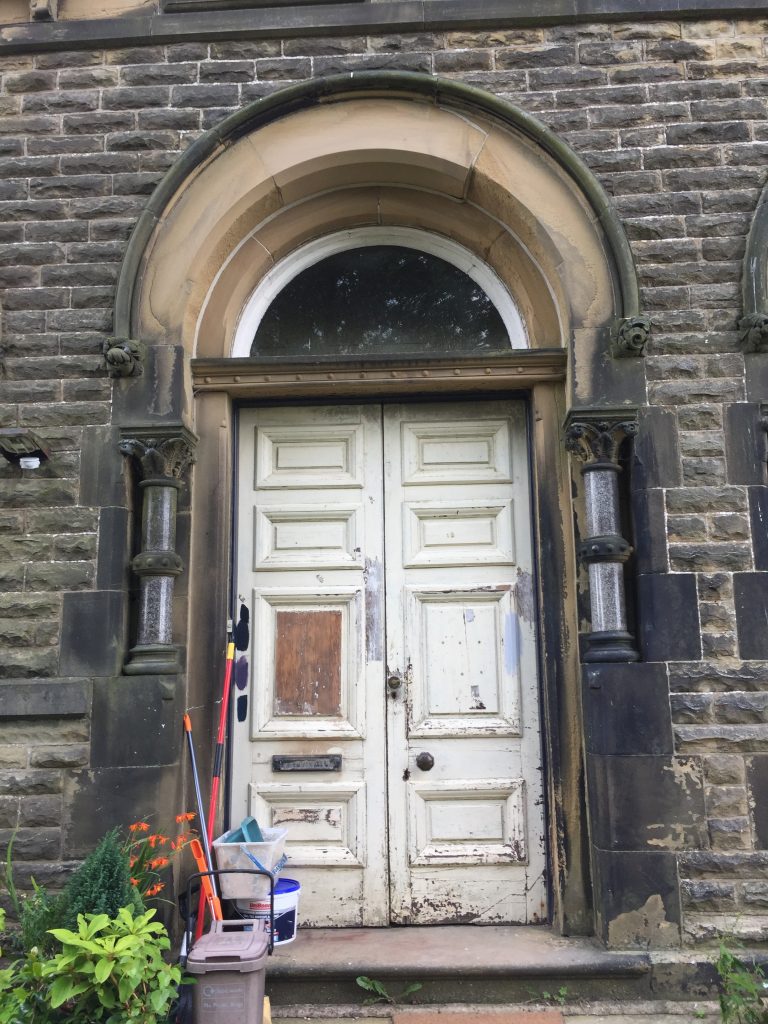
To both sides were graves. A workman appeared from nowhere, no doubt wondering what the heck I was doing but he offered to take my photo. In 2020 I stopped by again and found that the church had been converted into a home and the resident was working in her garden -cum-graveyard and I chatted with her.
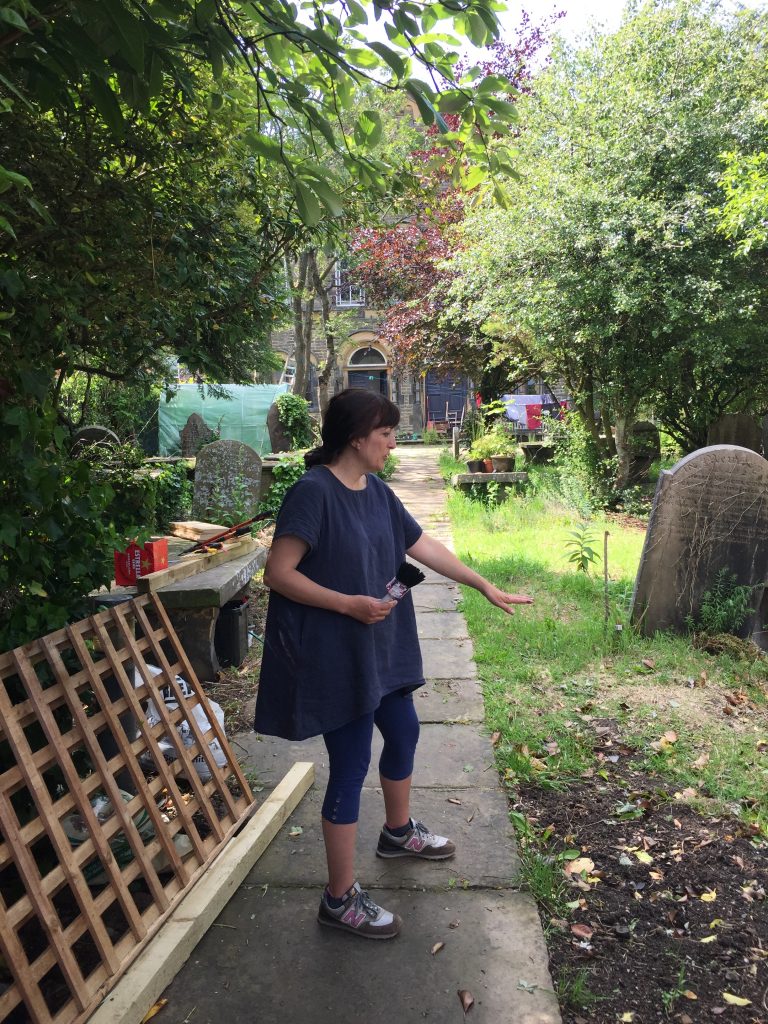
The history of the building is interesting to me. A small barn built in or before 1617 became the second place of worship for the Protestant Dissenters in the Calder Valley, the first being Rodwell End which I’d already visited in the course of my family research. In 1807 some 40 people who had attended the Birchcliffe Chapel in Hebden Bridge withdrew to found their own place of worship, which they opened at Slack in 1808 at a ceremony attended by seven hundred people. More than a thousand were at the Dedication service on the following Sunday. James Taylor, nephew of Dan Taylor , was the first Minister and he had the Church enlarged in 1819. By 1822 The Church at Slack was the 5th. largest of the 130 general Baptist Churches in the country and the General Assembly was held there. Experience Meetings were being held in 18 different houses.
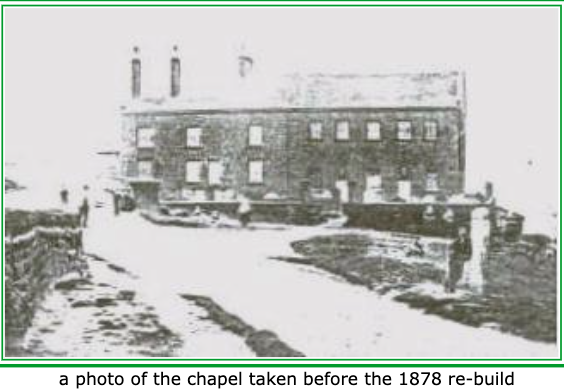
There were over 500 members by the middle of the Century but there was then something of a decline as the handloom industry suffered and members left to work in factories away from the area. A new schoolroom was opened on January 1st 1864 after much time and effort and money had been spent in obtaining gas! “The spacious new room, its brilliant sunlight, composed of thirty gas jets, won the admiration of all”. At this time an organ was introduced and house meetings were revived.
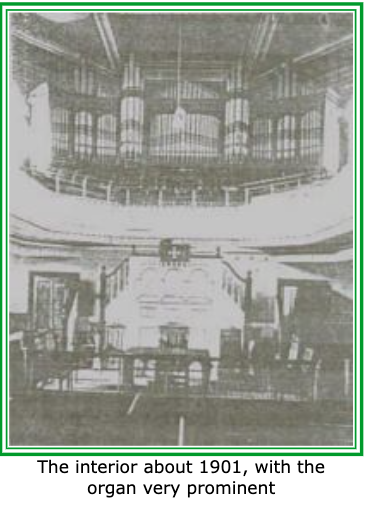
1878 saw the complete rebuilding of the Church and it is this building that I visited in 2020. Guess which business was employed to do the slating, painting and plastering of the new church. Yes, my Wrigley painting and decorating ancestors! A special service was held to mark the beginning of this rebuild during which the four corner stones were placed in position. “The mallets (very handsomely turned and finished were made by Mr Handel Halstead.”
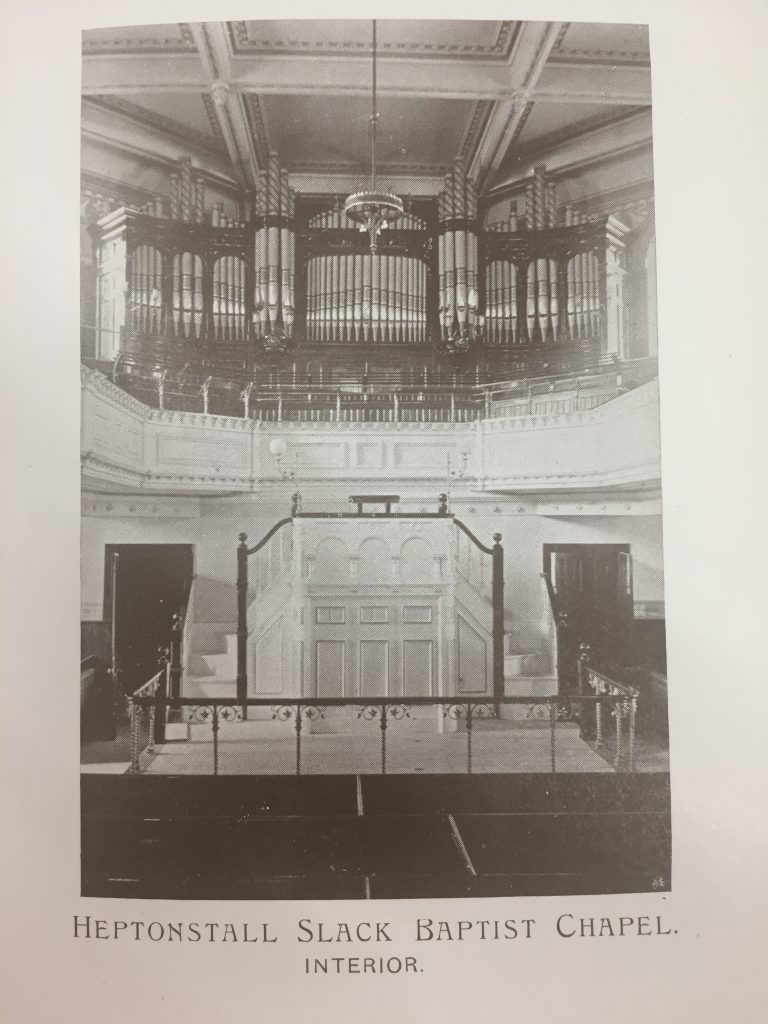
2014 – Heptonstall parish website: “The chapel was sold by the Baptists several years ago and is currently owned by an evangelical Christian group, however services have had to be moved because of problems renovating the building. Suggestions to use it as a halfway house for those recovering from drug abuse were dropped after objections from local residents. Could the chapel become a community centre, or could there be other uses for the building? All are welcome to this picnic to talk and find out more.”
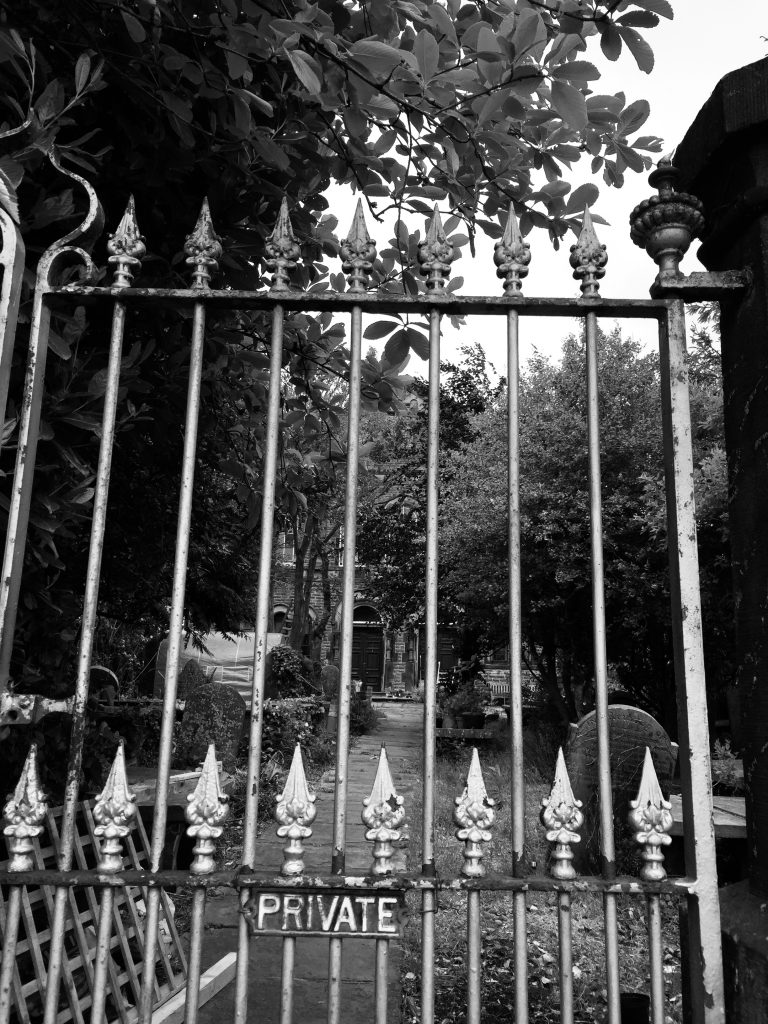
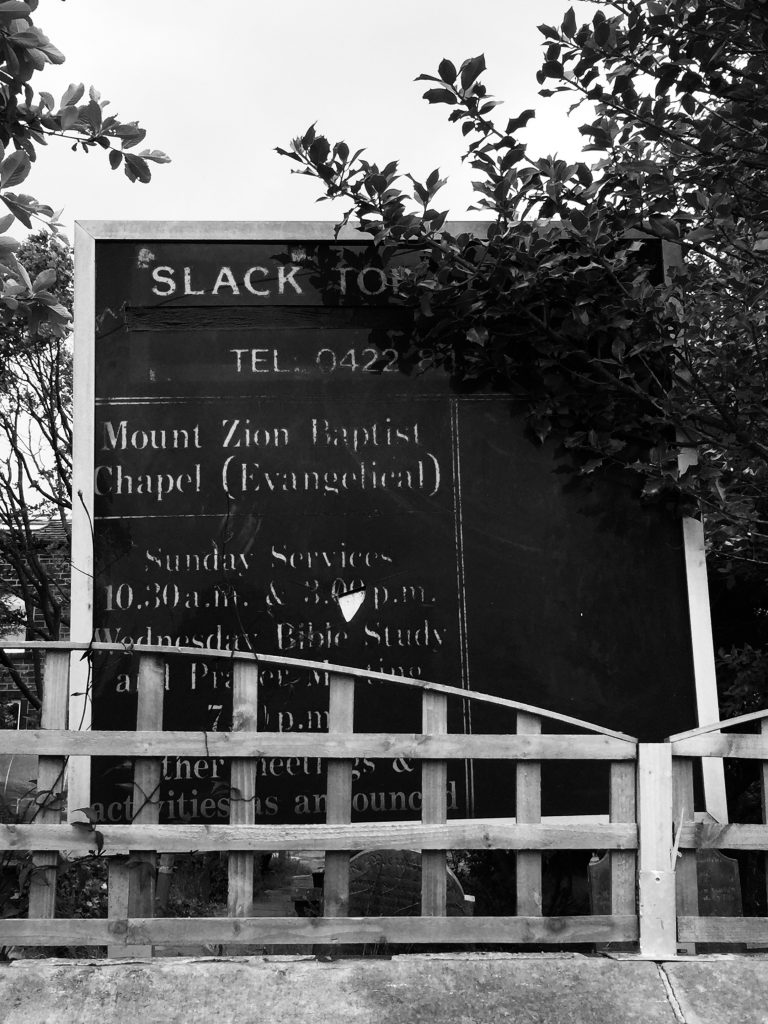
My visit in 2020
But if Handel Halstead had been named Handel by his father would it not therefore follow that his father had some connection with music? It took many hours of trolling through old newspapers online but I eventually found a clue. In the Lancaster Gazette of February 7, 1818 there is a reference to one Bannister Halstead, living somewhere close to Halifax. The date matched with what I had discovered about Handel’s father, Bannister: born 1781 in the Todmorden area, so by 1818 he would have been 37 years old. But not only that – wait for it. . . The article is about his music connection. Here it is in full – it’s too melodramatic and unexpected for me to retell it in my own words. It would reduce its impact.”It is with pleasure we inform our readers, that Mr. Whiteley, the constable of Sowerby, having, through his persevering exertions, obtained knowledge of a secret depot for receiving stolen goods, he immediately obtained a search warrant, and, on Thursday night, took along with him Mr. Brierley. constable of Halifax, and Mr. Wilson, constable of Heptonstall, in order to execute the same. Having arrived at David Wilcock’s house, at Bolton in Holland, near Gisburn, an immediate search commenced, when they discovered upwards of £200 worth of stolen goods, concealed in the false floor, belonging to Wilcock, which they seized and took possession of. It appeared that Wilcock, and his gang, had made a large opening into the false floor, and there concealed the property, having afterwards curiously plastered over the same to prevent discovery, till an opportunity arrived of a removal. It is to be hoped that officers, searching after stolen goods, should be aware of this circumstance. The stolen goods here alluded to, appear to belong to Mr. Dyson, of Barkisland Hall; Mr. Garside, of Elland, and Mr. Hirst of Huddersfield. There was also found during their search, a violin, supposed to belong to one Bannister Halstead, who has lately absconded from Hebden Bridge. On Sunday week, as Mr. W (Whiteley) was returning home by himself, after a very fatiguing march of several days in searching for those five notorious villains who have lately absconded, he met with two of them, Shaw and Dyson, on the turnpike-road leading over Blackstonedge, about six o’clock in the evening : the constable, without giving the least alarm, instantly seized Shaw by the throat, and Dyson by the handkerchief round his neck, which unfortunately giving way, he escaped ; finding himself at liberty, he immediately turned round and snapped a pistol at the constable, which fortunately missed fire; at that instant several gentlemen on their way down Blackstonedge, came to the assistance of the constable. A number of wood skewers, a quantity of packing cord, a flint, lead bullet, and a large knife, were found on him. He has since been committed to the House of Correction at Wakefield, on strong suspicion of being concerned in those extensive robberies that have so greatly alarmed the inhabitants of the town and neighbourhood of Halifax. This is the fourth time of the apprehension of Shaw on suspicion of felony, besides having been once tried at Leeds Sessions for a similar offense. We understand that in consequence of Shaw’s uncommon resistance, by the constable grasping him so violently on the throat, it was some time before he came to himself, and he complains much of the part being very sore.” I found it amazing that the only reference I can find to Bannister Halstead, is in connection with his violin. But then another question is raised. Why had Bannister recently absconded from Hebden Bridge? So far I’ve been unable to answer that particular question. He’d been married for 10 years, had 4 children and one on the way. The family had been living at Machpelah but by 1818 the family were living at Weasel Hall which I can see from the window overlooking my desk as I write. So Bannister Halstead, violin player, had named his son Handel, who in turn named his own son George Frederick Handel. ‘What’s in a name?’ you ask. A heck of a lot!
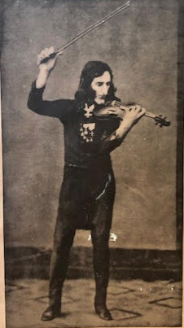
Note to self: George Frederick Handel’s niece, Florence Gertrude married George Haigh Moss jn
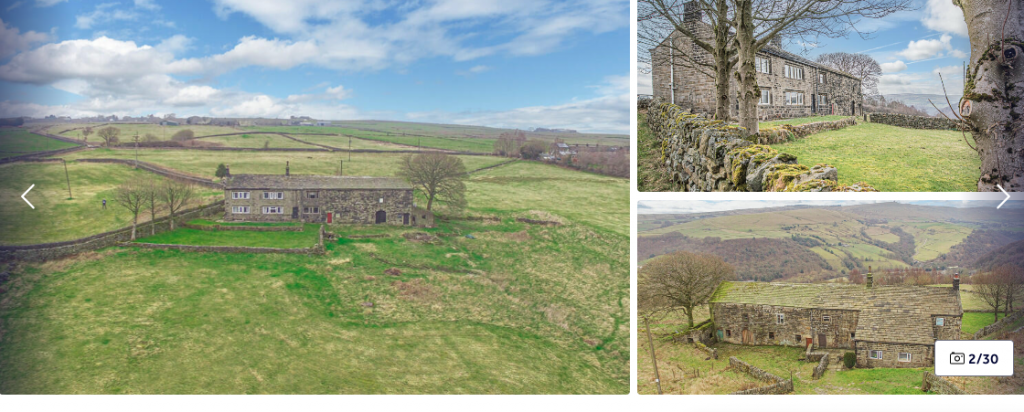
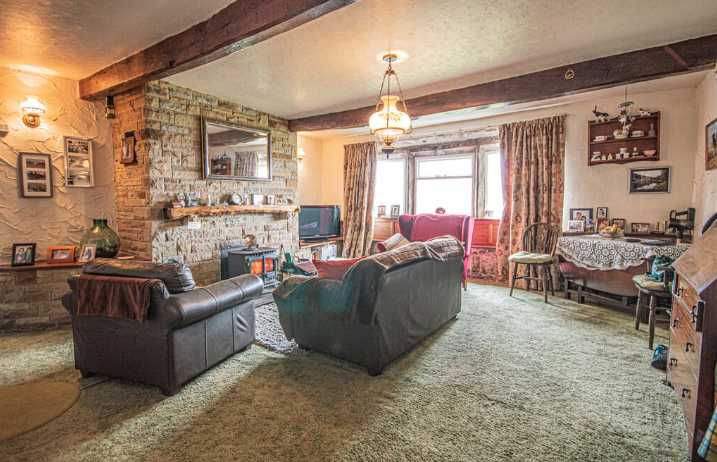
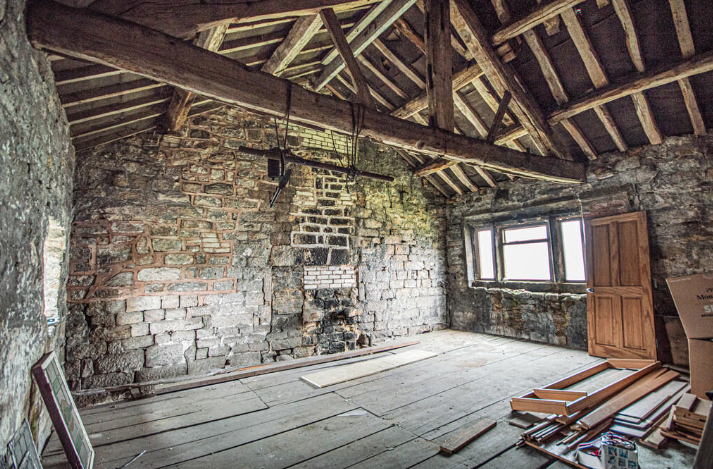


Recent Comments